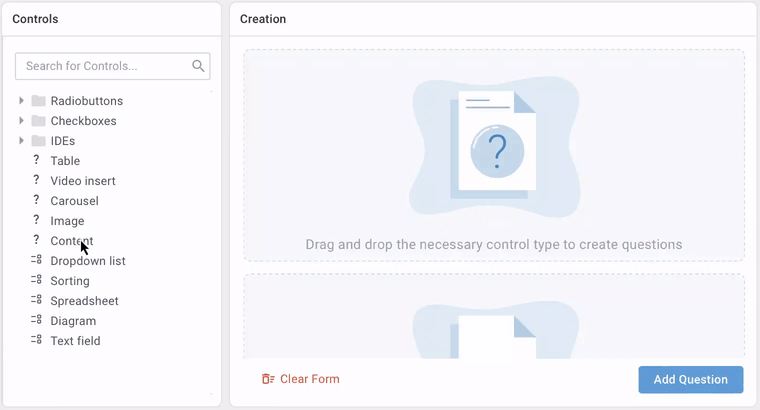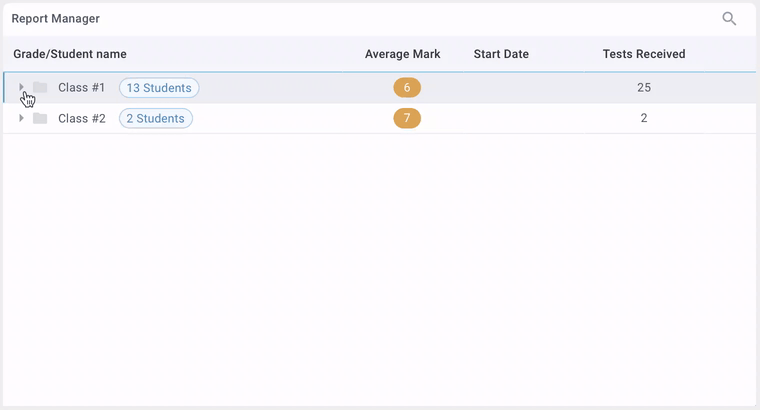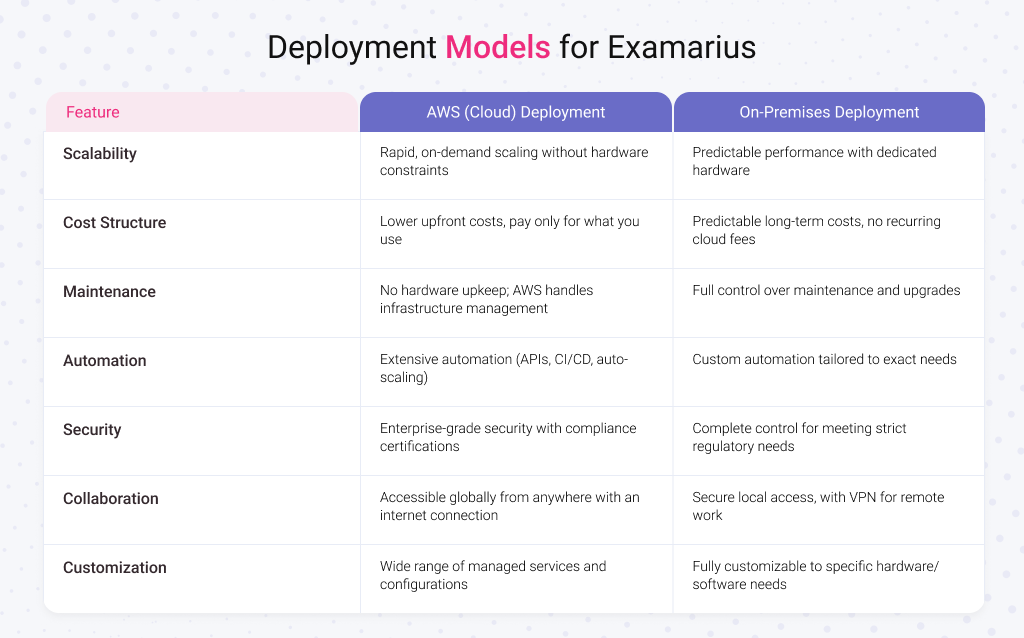Summary
In their pursuit of modern standards, educational institutions face an important decision when adopting new software solutions: whether to host applications on-premises or leverage cloud-based platforms. This choice significantly impacts major factors crucial for delivering effective digital learning experiences, such as accessibility, scalability, and cost.
On-premises solutions offer complete control over data and customization, appealing to schools with stringent compliance requirements or specific IT policies. Cloud-based exam software, on the other hand, works best when you need flexibility and scalability, allowing educational organizations to adjust resources based on demand without significant capital expenditure.
When implementing an online examination system, understanding the implications of these deployment models is essential. The Examarius online test platform that we often rely on in these cases offers both on-premises and cloud deployment options. Therefore, we are not limited to just one of these options. Today, we’ll consider a scenario of deploying Examarius on AWS and highlight the benefits and considerations of cloud-based implementation in the educational sector.
Struggling with an Outdated System and Longing for a Future-Proof Solution
We work with educational institutions across the United States, Europe, and Australia seeking to modernize their student assessment processes through Examarius. One representative case involved a school transitioning from optical mark recognition (OMR) system to a new online examination system. The OMR-based approach involves students filling in bubbles on pre-printed answer sheets using a pencil or pen. Once completed, these sheets are fed through a specialized scanner that identifies marked areas.
Challenges with the OMR System Client Had
- Limited Question Formats. The OMR system primarily supported multiple-choice questions (MCQ), restricting educators from incorporating diverse question types that assess higher-order thinking skills. For instance, there were no efficient ways for teachers to assess coding skills in their computer science program or use diagram-based responses in biology. The school needed to test problem-solving, not just memorization, which was problematic with their outdated solution;
- Manual Processes. The reliance on physical answer sheets necessitated manual distribution and collection, leading to logistical challenges and increased administrative workload. Distributing and scanning hundreds of paper answer sheets consumed a significant amount of staff hours per exam cycle, delaying grades by 2-3 weeks;
- Delayed Feedback. Processing and analyzing results took time, delaying feedback to students and hindering timely interventions. Struggling students, for example, repeated mistakes in final projects, lowering class averages. Also, teachers couldn’t adjust lesson plans mid-unit without real-time data;
- Resource Intensive. Maintaining the hardware and procuring specialized paper forms added to the operational costs. The need for specialized scanning hardware, proprietary software, and continuous procurement of pre-printed answer sheets escalated operational costs. Budget overruns forced cuts to STEM lab equipment. Additionally, the physical storage of paper records consumed valuable space and resources;
- Lack of Remote Accessibility. With the shift towards remote and hybrid learning models, the paper-based system proved incompatible with the need for online assessments. Students and educators faced challenges in conducting and participating in assessments outside the physical classroom.
The Decision to Transition: Why Our Client Chose Examarius
Recognizing these limitations, the school’s administration sought a solution that offered flexibility, efficiency, and adaptability to modern educational demands. Main requirements were automated grading to reduce the manual workload on teachers, diverse question types, including multimedia and interactive formats to cater to various learning styles, and advanced analytics for real-time insights into student performance and comprehension. After evaluating various online test systems, they chose Examarius for its comprehensive features and alignment with their objectives.
Diverse Question Formats for Enhanced Assessment Quality
The client struggled with bubble sheets that only allowed theoretical MCQs about specific programming language syntax and were reducing the ability to assess students’ knowledge in computer science. Imagining a new online examination system built with Examarius that would deal with this issue, they liked the support of a wide array of question types beyond multiple-choice, including:
- Diagram-based questions;
- Spreadsheet-based tasks;
- Short and long-form answers;
- Coding exercises with integrated IDEs;
- Audio and video-based questions;
- Table-based and image-based questions;
- Matching and sorting tasks.

Using Examarius’ test builder, teachers can now implement integrated IDE questions. Students can write actual code during exams (e.g., “Fix this Fibonacci function”), with auto-grading for syntax and manual rubric scoring for logic. Another example of using new online exam software includes creating diagram-based biology tests. Using labelled cell structures via drag-and-drop images is a decent replacement for vague “Choose A/B/C” questions.
From Weeks of Grading to Real-Time Insights
The manual grading process associated with the OMR system was time-consuming and prone to errors. The goal for Examarius-based automated grading software solution was to provide immediate results for objective questions, significantly reducing manual workload. This efficiency would allow teachers to focus more on instruction and less on administrative tasks, enhancing the overall educational experience.

Now, grades can be populated as students submitted, freeing teachers to start grading essays immediately. The online examination system provides access to early warning dashboards to help make the school curriculum more flexible. For example, the analytics system that flags struggling students during midterms allows same-day tutoring sessions.
Cost-Effective and Resource-Friendly
Maintaining the OMR system required significant investment in specialized hardware and consumables, straining the school’s budget. By eliminating the need for physical materials and specialized hardware, the Examarius online test platform reduced operational costs. Its one-time payment model further ensured budget predictability for the institution. Digital exams saved enough to fund new 3D printers for the school.
Enhanced Security Measures
Concerns about exam integrity were prevalent with the previous system. Examarius incorporated advanced online test security features, including randomized question order and secure login protocols, to maintain exam integrity and prevent cheating. These measures provided confidence in the fairness and reliability of the assessment process.
Read Also Combating Cheating in Online Exams: Strategies and Solutions (feat. Examarius)
Flexible Deployment Models for Examarius: Understanding The Options

Schools today often adopt a hybrid IT infrastructure, blending on-premises servers with cloud-based services to meet their unique needs. Our customer was no exception. This approach would allow them to retain control over sensitive data and critical applications while leveraging the scalability and flexibility of the cloud.
Before implementing our solution, we needed to consider possible deployment strategies. The Examarius online test system works perfectly both on on-premises servers and cloud platforms. While an on-premises server may seem like a convenient option, it’s important to evaluate whether this setup aligns with the demands of contemporary online assessment platforms. Factors, such as scalability, maintenance overhead, and remote accessibility, play significant roles in determining the most effective deployment model.
Predictable Infrastructure. Institutions with existing IT infrastructure and dedicated technical staff can leverage their resources to use exam software for schools. It allows for predictable budgeting, as costs are primarily associated with maintenance and occasional upgrades rather than recurring subscription fees.
Lower Dependency on Internet Connectivity. For schools located in rural or low-connectivity areas, on-premises deployment ensures that exam software remains accessible. This setup can be crucial during examinations, where consistent access to the platform is essential.
Complete Data Control. Hosting Examarius on local servers ensures that all sensitive student and staff data remains within the institution’s physical premises. This setup is particularly advantageous for schools that must adhere to strict data governance policies or comply with regional regulations.
Custom Configuration. On-premises deployment offers the flexibility to tailor hardware specifications and network configurations to the institution’s unique needs. Schools can optimize server performance, storage capacity, and network bandwidth to align with their specific usage patterns and scalability requirements.
For educational institutions looking to modernize their exam processes, deploying Examarius-based solutions on Amazon Web Services (AWS) offers a powerful and budget-friendly solution. Unlike on-premises servers, AWS provides schools with the flexibility, reliability, and scalability needed to conduct exams smoothly and without the burden of managing physical infrastructure. Here’s the main benefits of deploying exam software on AWS.
Global Accessibility and Remote Access. Cloud-based installations of Examarius enable students and educators to access the platform from any location with an internet connection. It ensures that assessments can be conducted seamlessly regardless of geographical constraints.
No Upfront Hardware Costs. Pay Only for What You Use. Schools avoid large capital expenditures on servers, storage, and networking equipment. AWS’s pay-as-you-go model means institutions only pay for server capacity during exam periods, reducing idle costs.
Seamless Scalability for Peak Exam Periods. On-premises servers may struggle with performance bottlenecks if hardware isn’t provisioned for peak loads. Another problem is manual scaling, requiring IT teams to add physical servers, which is a slow and costly process. AWS can automatically handle traffic spikes, preventing crashes or slowdowns. AWS’s Elastic Load Balancing and Auto Scaling services ensure that the online exam software can handle varying loads efficiently. During peak examination periods, these services automatically distribute incoming application traffic across multiple targets and adjust capacity to maintain consistent performance, eliminating the need for manual intervention. After exams, resources can be scaled down, cutting unnecessary costs.
Reliable Uptime. No More Exam Disruptions. AWS’s 99.9% uptime SLA minimizes the risk of system failures during critical exams. Global server availability means students can access exams from anywhere. Automatic failover mechanisms keep the platform running even if an AWS data center experiences issues.
Simplified IT Management for Overworked School Staff. With cloud infrastructure for schools, no server maintenance needed. AWS handles updates, patches, and security fixes. IT teams can focus on supporting teachers and students rather than troubleshooting hardware. Pre-configured AWS deployment templates make launching education software faster and easier.
Simplified Database Management. Amazon RDS automates routine database tasks such as provisioning, patching, backups, and recovery. This automation reduces the administrative burden on IT staff, allowing them to focus on supporting educators and students rather than managing database infrastructure.
Read Also The Test of Time: How Online Platforms Reshape Traditional Educational Assessments
How Much Does Examarius on AWS Actually Cost?
Shifting to a digital exam platform shouldn’t break the bank, and with the Examarius online test platform on AWS, it doesn’t have to. Educational institutions often assume cloud hosting is costly, but AWS’s flexible pricing model makes it a budget-friendly alternative to on-premises servers. Whether you’re a small school running occasional tests or a growing district managing high-stakes exams, the cost of running online exams on AWS can scale to your needs without unexpected expenses.
To demonstrate just how accessible cloud-hosted exams can be, we’ve outlined two real-world deployment scenarios with estimated monthly costs. These projections account for typical AWS resource usage, including compute power, database storage, and backups, helping you plan confidently.
| Scenario | Concurrent students | Typical AWS footprint | On-demand monthly cost (USD)* |
| Small cohort | 20 | • 1 × EC2 t3.small app server
• 1 × RDS db.t3.micro (MySQL) • 50 GB gp3 EBS + automated snapshots |
≈ $35-40 |
| Growing cohort | 100 | • 1 × EC2 t3.medium app server
• 1 × RDS db.t3.small (MySQL) • 100 GB gp3 EBS + automated snapshots |
≈ $65-70 |
*NOTE: All figures are estimates. Actuals may vary. Based on AWS on-demand prices published in 2025; schools can lower this 30-40 % with Reserved Instances, spot fleets for non-exam hours, or by shutting servers down between terms. Figures exclude Examarius’ one-time license.
These ballpark numbers show that even a mid-size school can run a fully managed, auto-scaling exam environment for under $40/month. For a precise cost estimate tailored to your academic calendar and student numbers, we recommend:
- Using the AWS Pricing Calculator,
- Consulting with the Examarius team.
Read also Navigating the Education Software Dilemma: SaaS vs. On-Premise Solutions?
Final Grade: Why Cloud-Based Exam Solutions Pass the Test
Switching from traditional systems to cloud-based exam software such as Examarius on AWS addresses the limitations of outdated assessment methods and aligns with the needs of modern education. With AWS’s scalable and reliable infrastructure, schools can ensure uninterrupted access to education software, accommodating varying loads during peak examination periods without the need for substantial investment. The automation of routine tasks, facilitated by services like Amazon RDS, reduces the administrative burden on IT staff.
The cloud-based deployment offers enhanced accessibility, enabling students and educators to engage with the platform from any location, thus supporting remote and hybrid learning models. The integration of advanced online exam analytics and diverse question formats within Examarius fosters a more comprehensive assessment of student performance, promoting personalized learning paths. Ready to modernize your assessment process? Contact us to explore how Examarius can solve your school’s unique challenges.